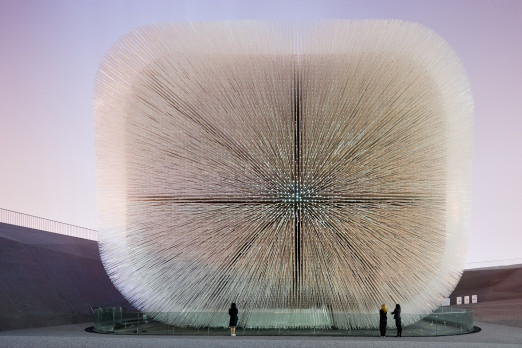Contemporary Cartography at the Building Centre explores how we navigate, document and shape today’s built environment. The exhibition features multidisciplinary projects including work by James Corner Field Operations and ScanLab Projets, among others. It is an exploration of mapping in contemporary practice and challenges what we know mapping to be, whilst reimagining our cultural landscape. How can cartography open up new ways of seeing the world? What are the possibilities of mapping and how can it influence society’s experience of the built environment?
Meta/physical - Boundaries of Hong Kong also at the Building Centre showcases the most recent architectural developments in Hong Kong. The exhibition highlights the various boundary conditions of the city with its various architectural scales and intensities. How do Hong Kong's neon signs, country parks and high-density building facades create boundaries within the city?
A 30 minute walk away from the Building Centre, the Royal Institute of Architects (RIBA) are exhibiting Walk the line: the distributed vertical border [Core]. The exhibition explores the reactivation of the railway system in Mexico which opened an informal channel for thousands of migrants from the North Triangle of Central America to reach the US border. The exhibition investigates how their movements affect the environments of the landscape they navigate.
Studio Egret West presents 'Fault Lines' — an interactive installation exploring the forgotten edges of London’s local authority boundaries which are rarely the focus of people’s attention or co-ordinated investment. Usually, out of mind, these spaces can either be left behind or (unconventionally) prosper. Fault Lines centres on a physical model which welcomes visitors to share thoughts around these peripheral environments through a collective mapping exercise. During the course of the installation, the model will mature and grow in complexity, and function as a platform for cross-disciplinary exchange.
Situated near the Barbican, for LFA Velorose Gallery exhibits Non-Structures by Francisco Ibanez Hantke. This photography exhibition presents cities as a spectacle of constant conflict and captures key moments in the life of various buildings. The exhibition will reveal the boundaries between buildings and their site whilst exploring the relationship between planning and chance, and process and product.
The Museum of London is exhibiting the work of Aicha El Beloui, a Casablanca-based designer and creative director. Gathering personal narratives through walking through London, using the British Library archives and conducting interviews, Beloui discovered the connections between Spain, France and Morocco as 'Moroccan' presence in the city. Drawing from her research, Beloui presents distinctive maps, filled with textured connections. Displaying the routes between Morocco and London, Beloui invites the viewer to reflect on citizenship, belonging and how we inhabit spaces within the built environment.
Exhibited by the Guildhall Art Gallery, 'Architecture of London brings' together artworks from the 17th century to the present day to illustrate how London’s cityscape has inspired artists over four centuries. Featuring 80 works by over 60 artists, drawing from the Guildhall Art Gallery’s extensive collection and loans from worldwide galleries, the exhibition examines how London is portrayed by a diverse selection of artists. The exhibition celebrates London’s wide-ranging architecture and offers a unique insight into London’s ever-evolving topography.
Also around the South Bank is Spaces for life: designing boundaries of how we use the city at Hay’s Galleria. Here, designer Hilson Moran explores how different outdoor microclimates create psychology boundaries between urban spaces. Moran’s exhibition explores the relationship between the ‘microclimate’ and the concept of human comfort.
Around Bermondsey, Anise Gallery presents Every Building on the Old Kent Road, which is a homage to Ed Ruscha’s ‘Every Building on the Sunset Strip, 1966’ The exhibition uses the same original methodology as Rusha did and explores the road’s history and ongoing change.
In South Kensington Paper Castles at the V&A imagines an alternative future for architecture. Fifteen architectural practices will exhibit a paper model to sit on top of the cases in the V&A’s Architecture Gallery. These models sit in dialogue with that underneath, building on this history to examine the future built environment. This display is created by the V&A + RIBA Architecture Partnership.
Video credit: ScanLAB Projects, originally produced for the New York Times.



